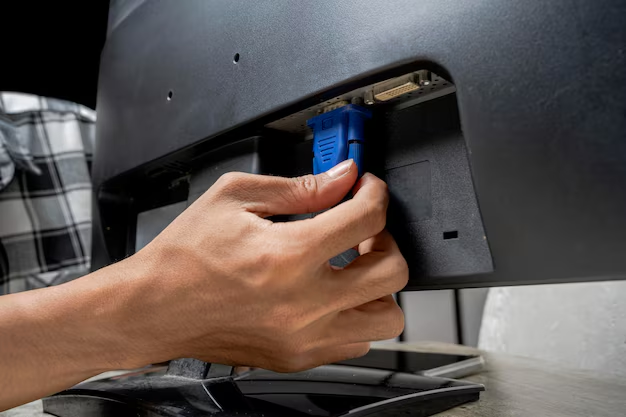Seamless Computing: A Comprehensive Guide on Transferring Your OS to an SSD
In the ever-evolving world of technology, improving your computer's performance is crucial. One of the most significant upgrades you can make is transferring your operating system (OS) from a traditional hard disk drive (HDD) to a solid-state drive (SSD). This transition not only enhances speed and efficiency but also offers long-term reliability. Let’s explore how this upgrade can be accomplished smoothly and efficiently.
Why Transfer Your OS to an SSD?
Upgrading your storage from an HDD to an SSD can bring substantial improvements to your computing experience:
Speed 🚀: SSDs provide faster boot times and quicker application launches.
Reliability: With no moving parts, SSDs are less prone to mechanical failures, making them more reliable.
Energy Efficiency 🌱: They consume less power, extending the battery life of laptops.
Before diving into the steps, consider the reasons why you would want this upgrade. Whether for improved performance, reliability, or just the allure of newer technology, understanding the benefits ensures you make an informed decision.
Preparing for the Transfer
Embarking on this journey requires some preparation to ensure a smooth transition:
Back Up Your Data
Before you start the transfer, it's crucial to back up your data. Use an external storage medium or a cloud service to make sure all your files and settings are safe. While the transfer process is generally safe, backups provide a safety net in case anything goes awry.
Choose the Right Tools 🛠️
Several tools can help streamline the OS transfer. Popular options include:
Cloning Software: Apps like Acronis True Image, Macrium Reflect, or EaseUS Todo Backup make cloning your OS to an SSD straightforward.
SATA to USB Adapter: Needed if your SSD will be connected externally during the transfer.
Ensure Proper SSD Fit
Make sure the SSD fits your device specifications. Consider form factor, available connectors, and storage capacity. The common types are SATA and NVMe, with each offering different speeds and compatibilities.
Step-by-Step Guide to Transferring Your OS
Here’s a detailed guide to help you transfer your OS seamlessly:
Step 1: Install the SSD
If using a desktop computer, open the case and install the SSD in a dedicated bay. For laptops, ensure you have appropriate adapters if the SSD replaces an existing drive.
Step 2: Format the SSD
Once connected, format your SSD. This can be done through the Disk Management tool in Windows:
- Right-click on ‘This PC’ and select ‘Manage’.
- Go to ‘Disk Management’, right-click on your SSD, and choose ‘Format’.
Caution: Ensure you do not format your existing drive.
Step 3: Clone Your OS
With the cloning software:
- Select your current OS drive as the source.
- Choose the SSD as the destination.
- Follow the prompts to begin the cloning process.
This procedure copies all data, including the OS, applications, and system settings, onto the SSD.
Step 4: Boot from the SSD
After cloning, set the SSD as the primary boot option:
- Restart your computer and enter the BIOS (usually by pressing F2, F10, or DEL during startup).
- Navigate to the boot menu and set your SSD as the primary drive.
- Save changes and exit the BIOS.
Step 5: Verify the Transfer
Boot into the OS from the SSD to verify the transfer was successful. Check if all applications and settings are intact and functioning as expected.
Troubleshooting Common Issues
Even with meticulous preparation, you might encounter some hiccups:
Incorrect Boot Device Selected
If your computer boots from the old HDD:
- Double-check BIOS settings to ensure the SSD is set as the primary boot device.
Missing Disk Space
If you notice unexpected disk space usage:
- Use disk management tools to expand the partition or eliminate duplicate files on the previous HDD.
Maintaining Your SSD for Longevity
A successful transfer is just the beginning. Proper upkeep of your SSD is crucial for long-term performance:
Enable TRIM
TRIM helps manage deleted data effectively on an SSD. Most modern operating systems enable TRIM by default, but you can verify this by running a simple command in your terminal or command prompt.
Monitor Health and Performance
Use tools like CrystalDiskInfo to keep track of your SSD’s health. Regular checks can preempt issues, allowing you to act before failures occur.
Avoid Frequent Overwrites
Try to avoid unnecessary writes and erasures, as these operations can reduce a drive’s lifespan. Manage large file transfers carefully and utilize external drives if necessary.
Summary of Key Steps
Here's a quick visual rundown to remember:
- Back Up Data: Ensure all your files are safe 🗄️.
- Choose Tools: Select cloning software and connectors 🛠️.
- Install & Format SSD: Prepares the SSD for data transfer 📦.
- Clone & Boot: Transfer OS and set SSD as the primary boot drive 🚀.
- Verify & Maintain: Check for successful transfer and enable maintenance measures 🛡️.
Making the Transition Meaningful
Transferring your OS to an SSD is more than just an upgrade; it’s an investment in your computer’s future. By following these steps carefully, you can maximize performance and enjoy all the benefits an SSD has to offer. Remember, technology is here to enhance your life—embrace these tools and make the most of your computing experience!

Related Topics
- How Can I Transfer Data From One Laptop To Another
- How Can I Transfer Domain To Godaddy
- How Can I Transfer My Calls To Another Phone
- How Can I Transfer Pdf To Word
- How Can We Transfer Data From One Laptop To Another
- How Can You Transfer Data From One Phone To Another
- How Can You Transfer Emails From One Account To Another
- How Can You Transfer Vhs Tapes To Dvd
- How Do I Transfer a Prescription From Walgreens To Cvs
- How Do I Transfer Data From Ipad To Ipad